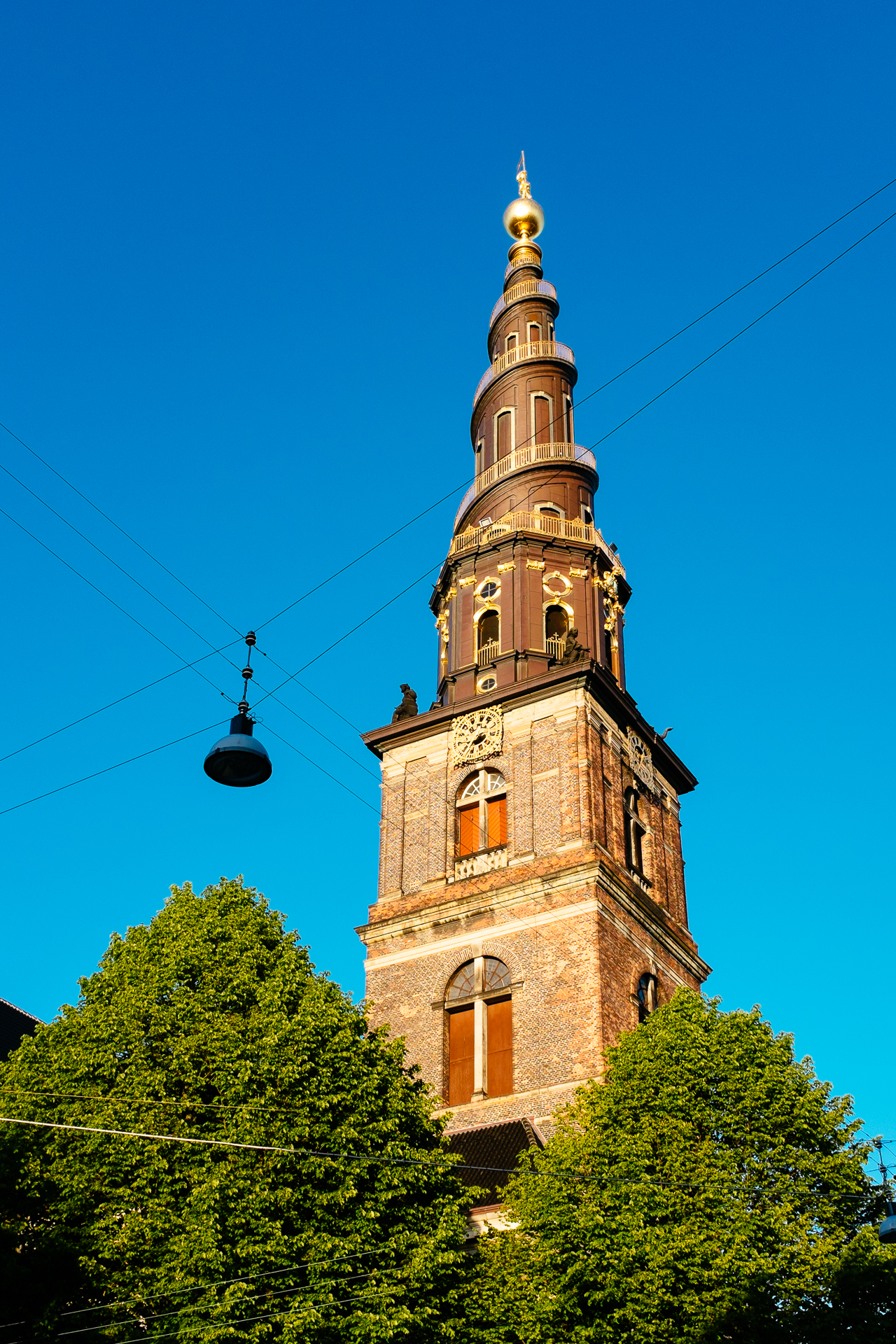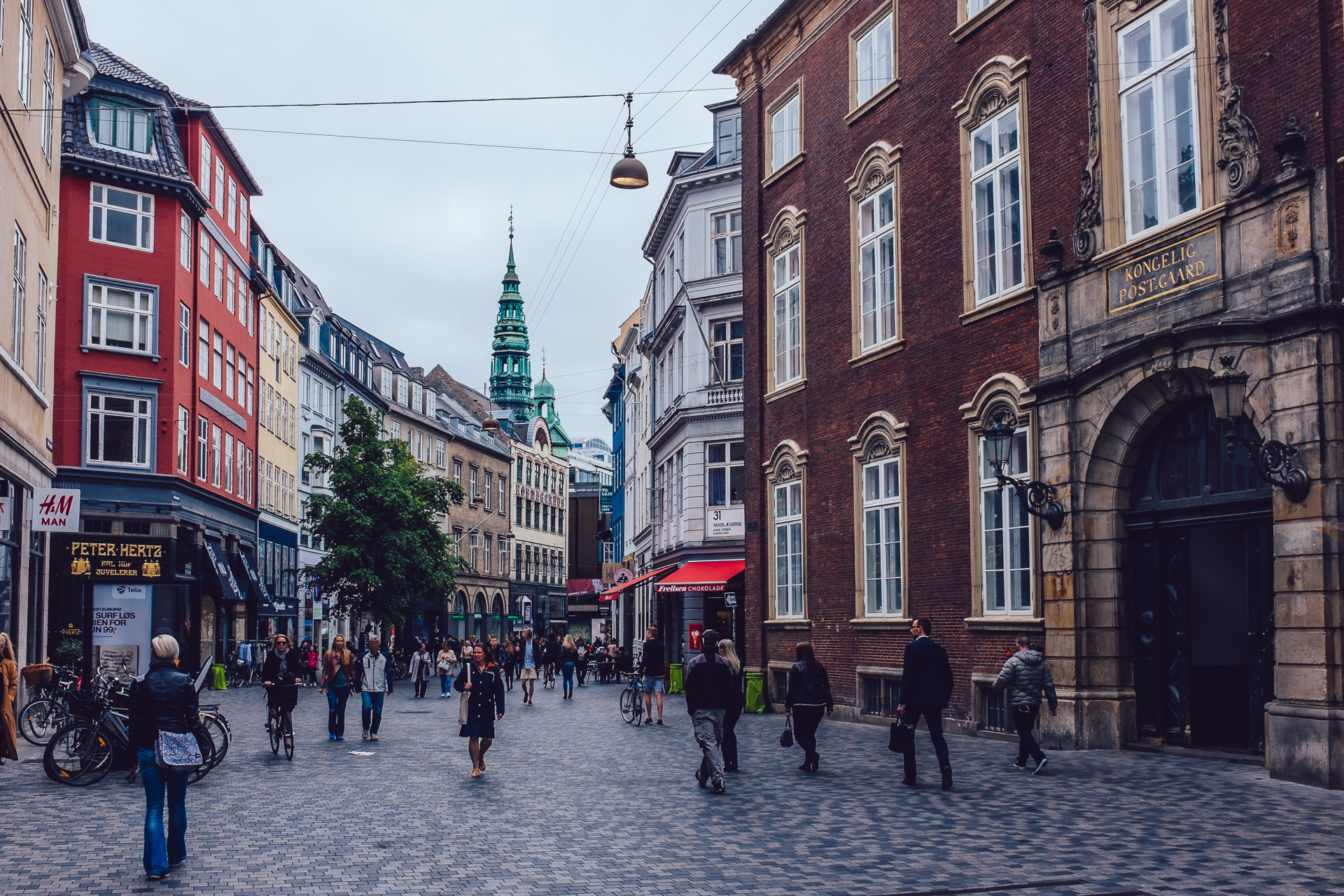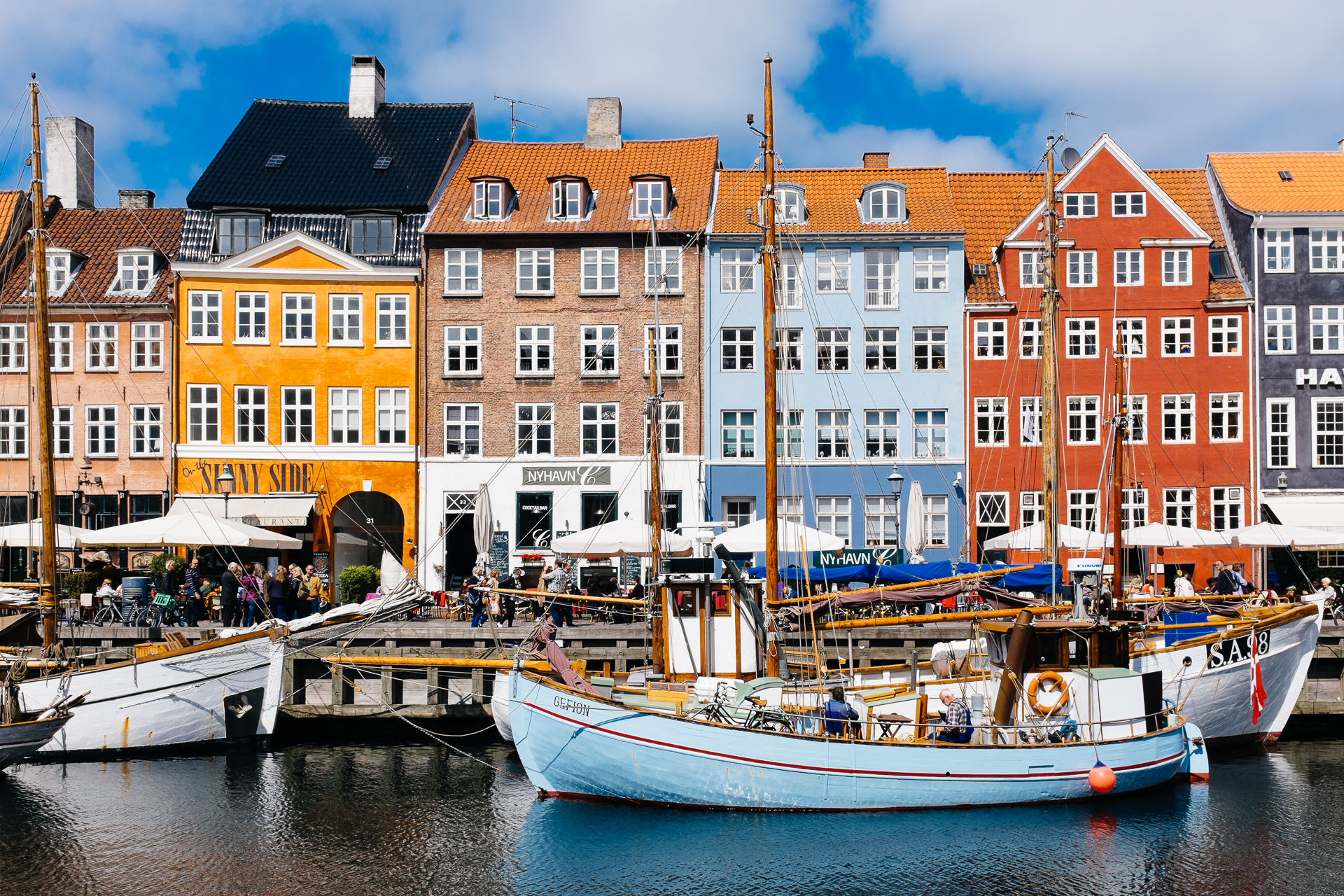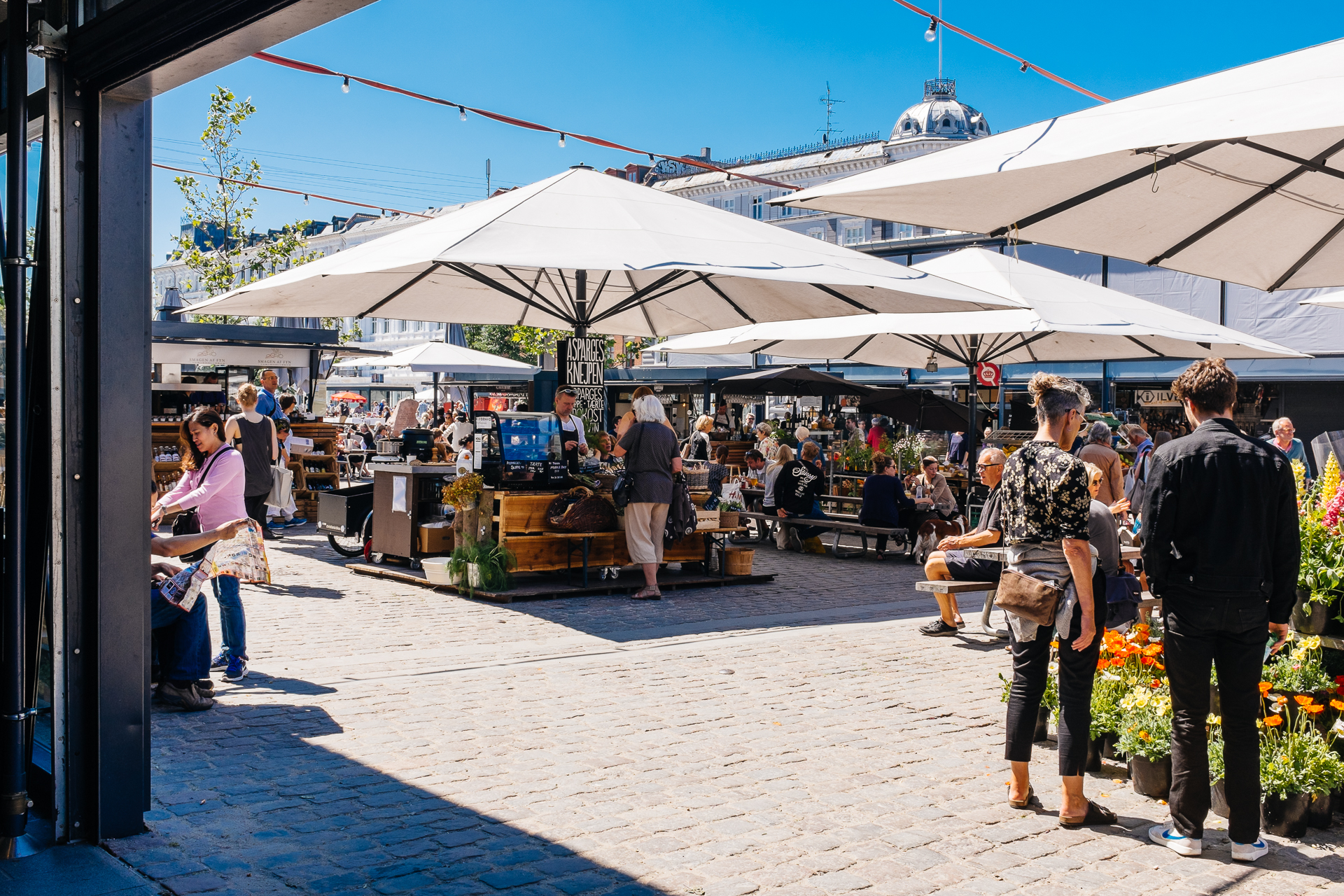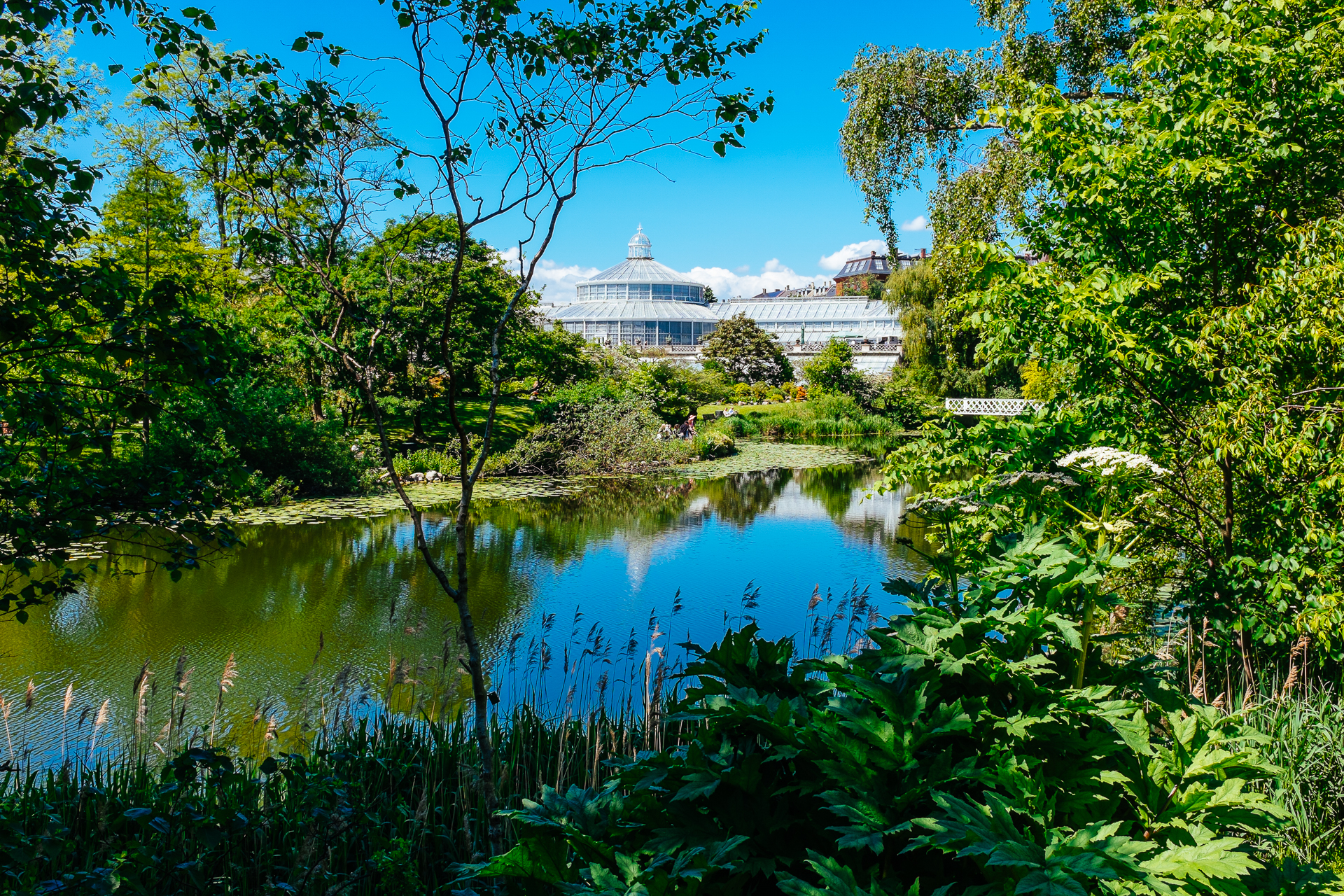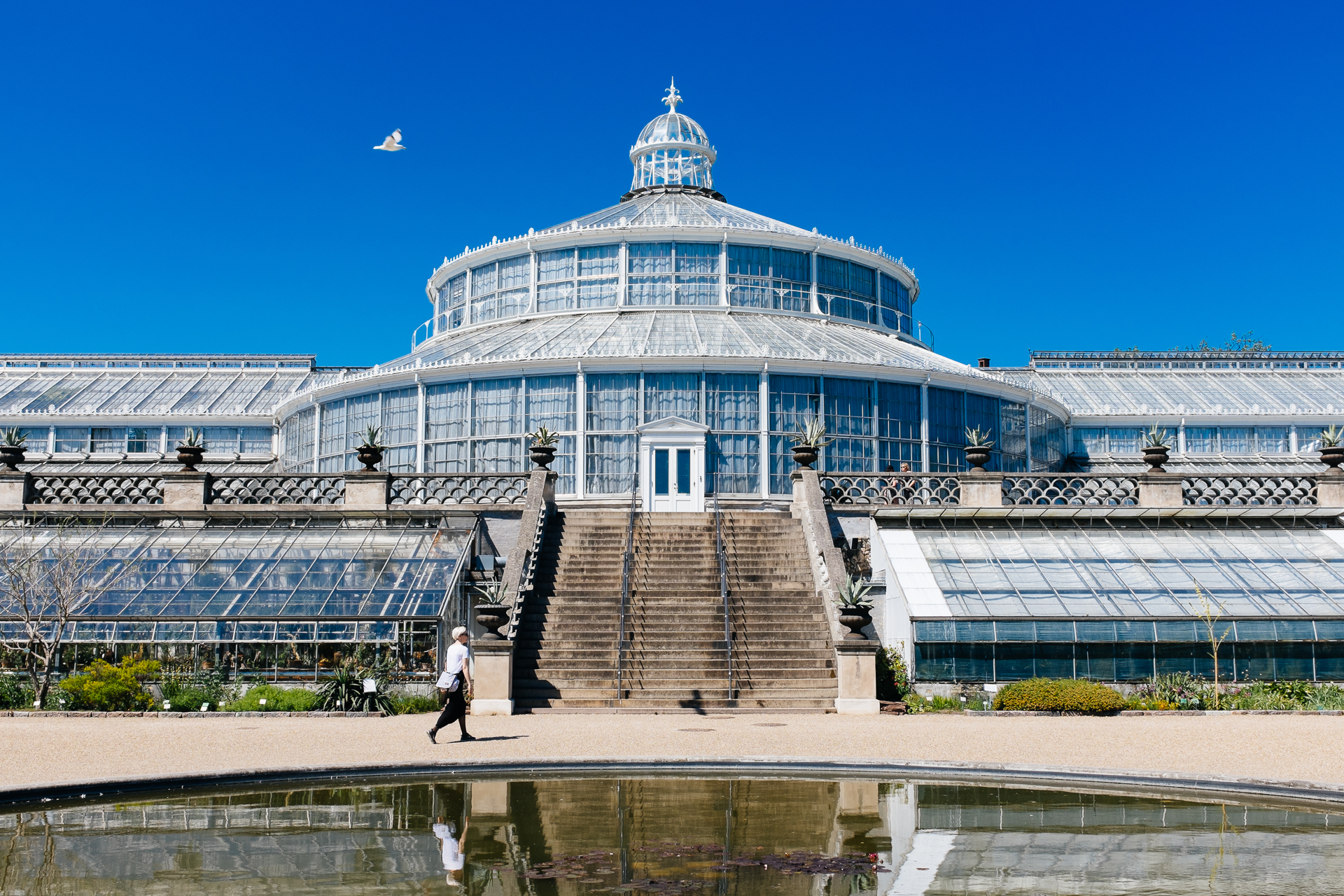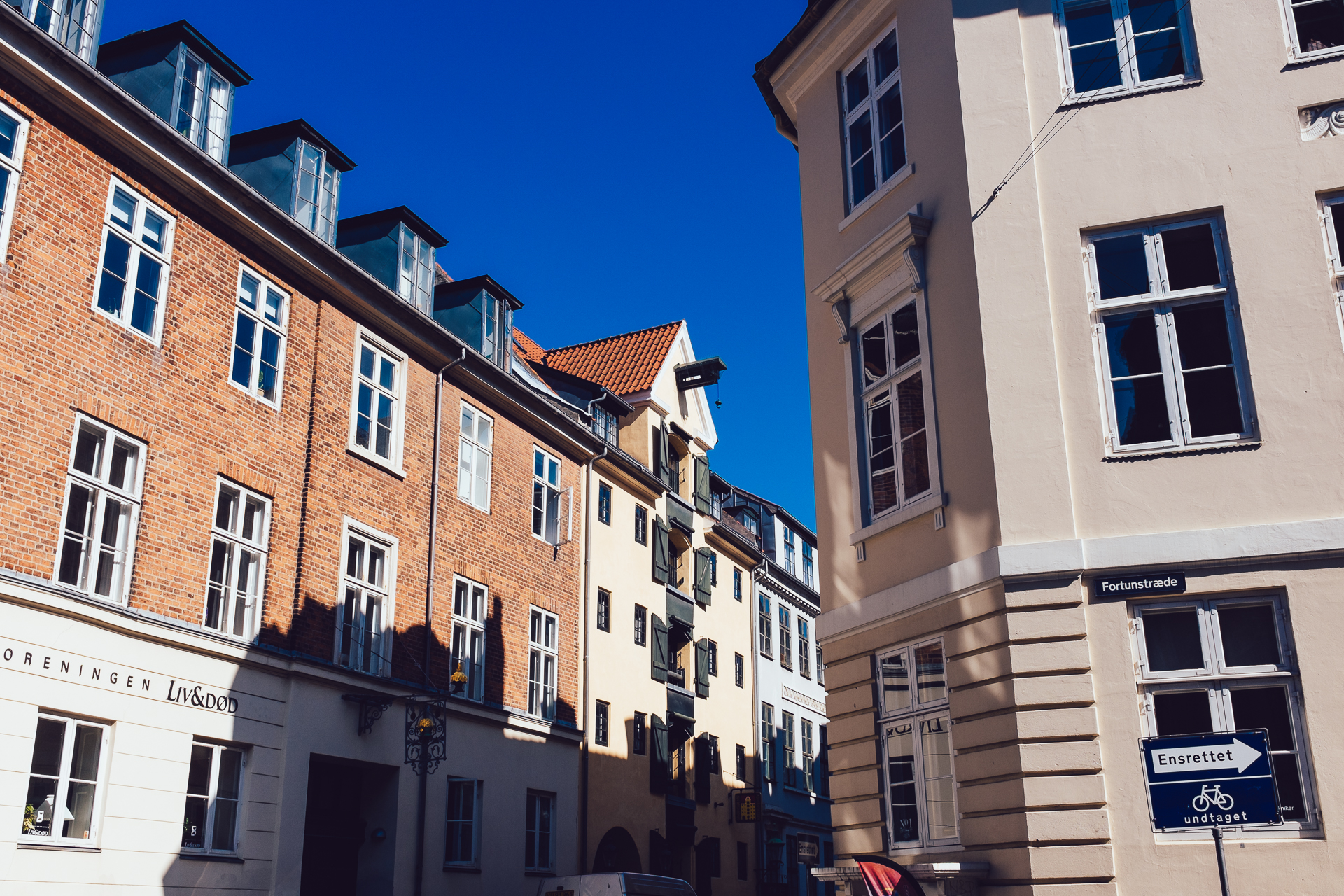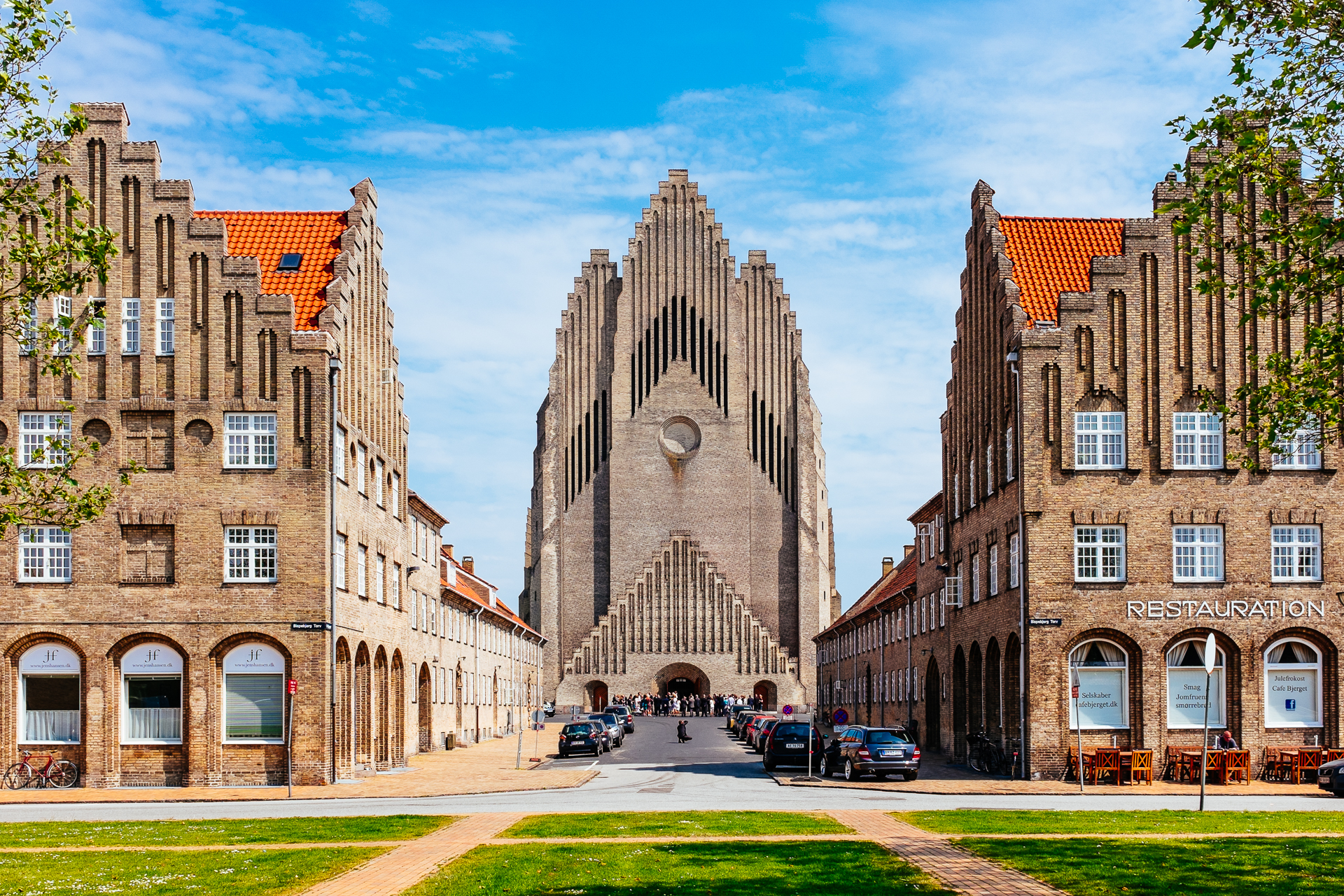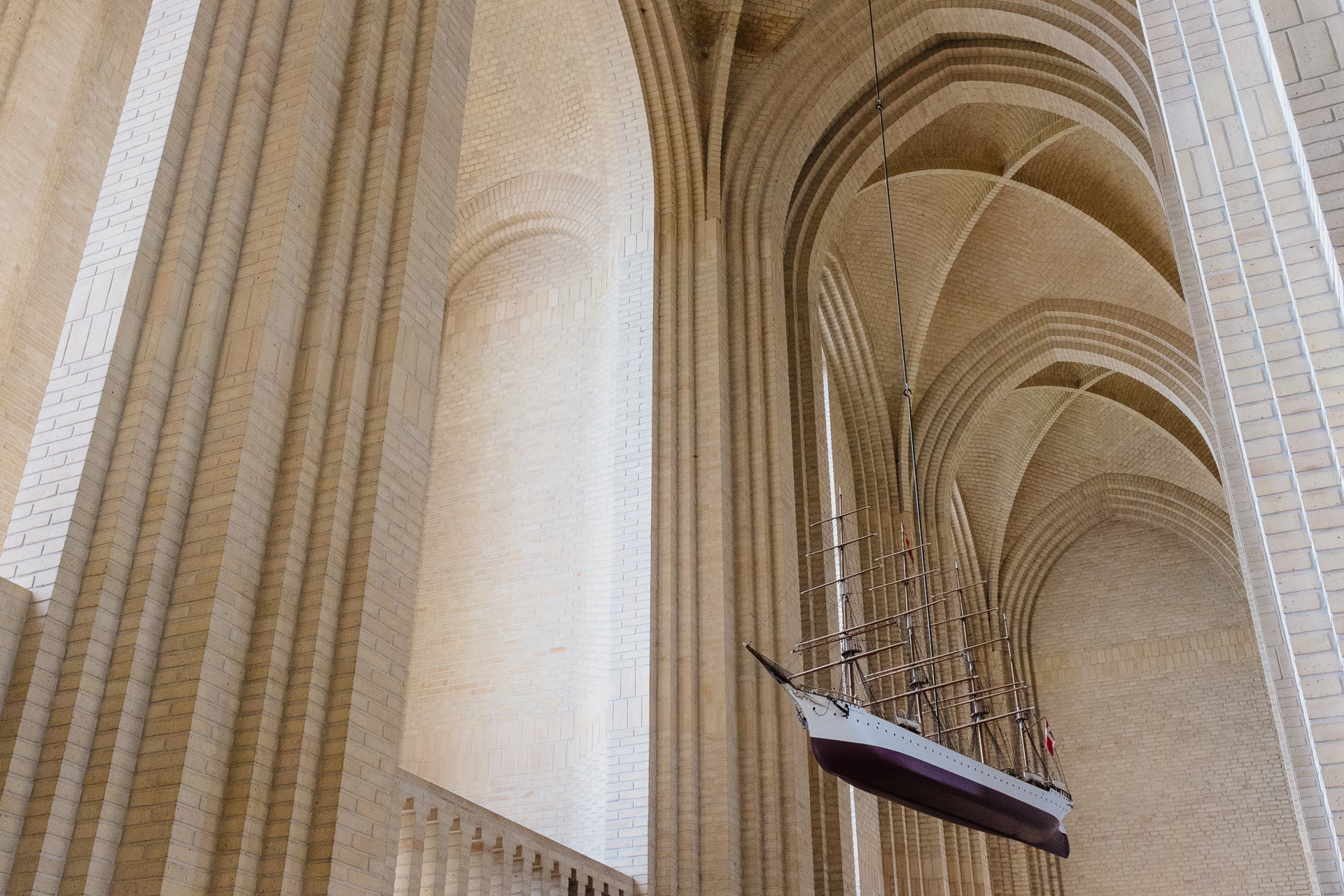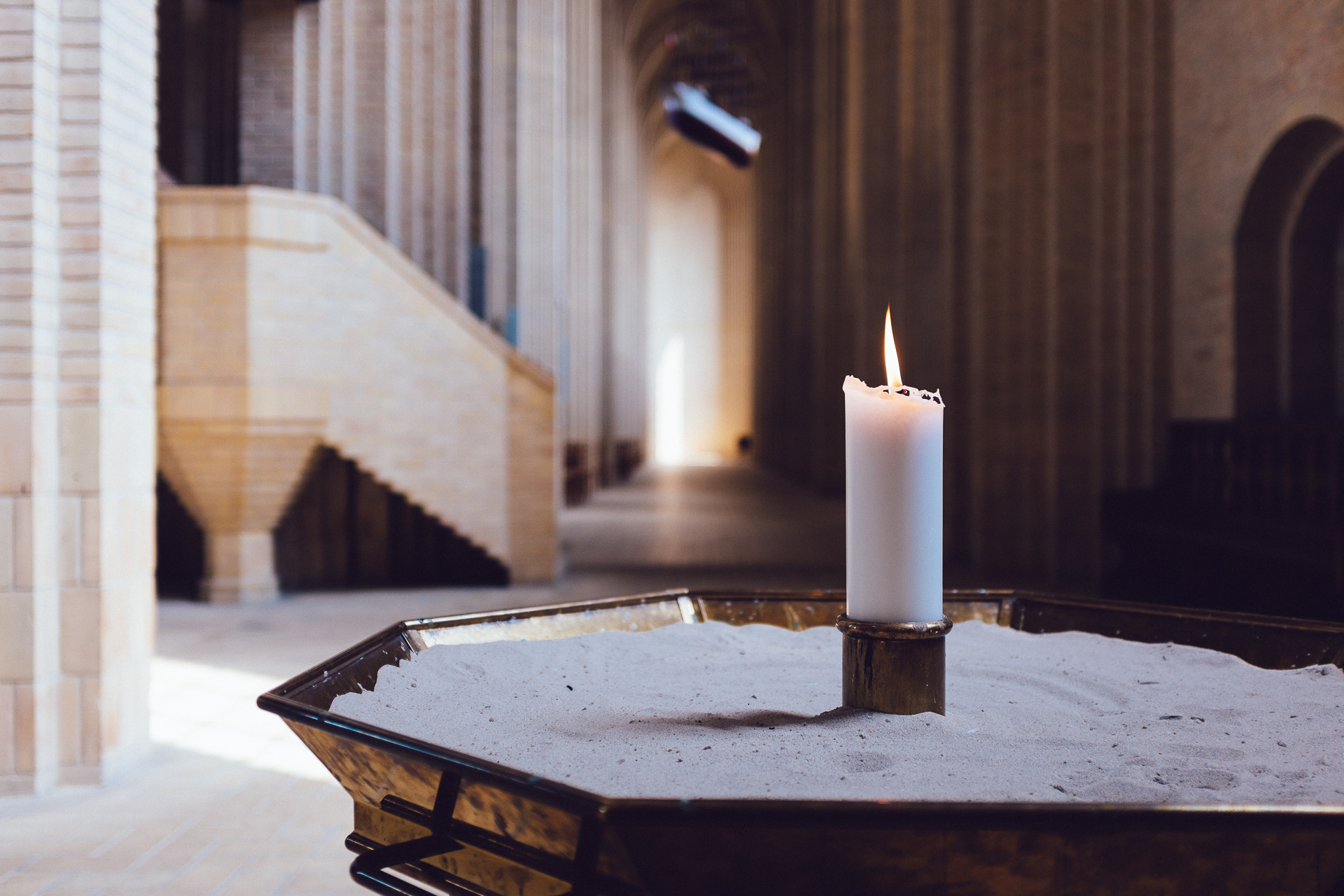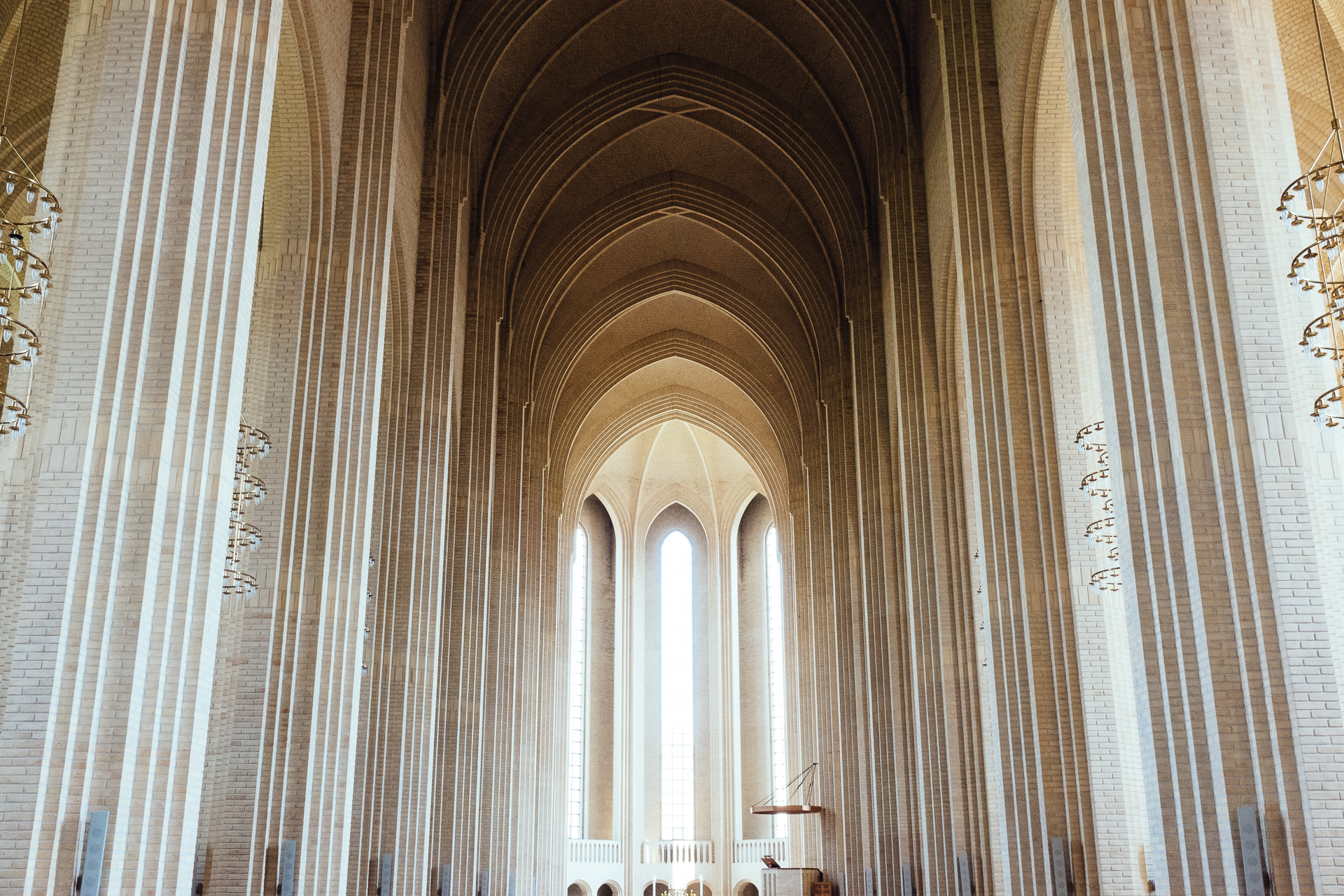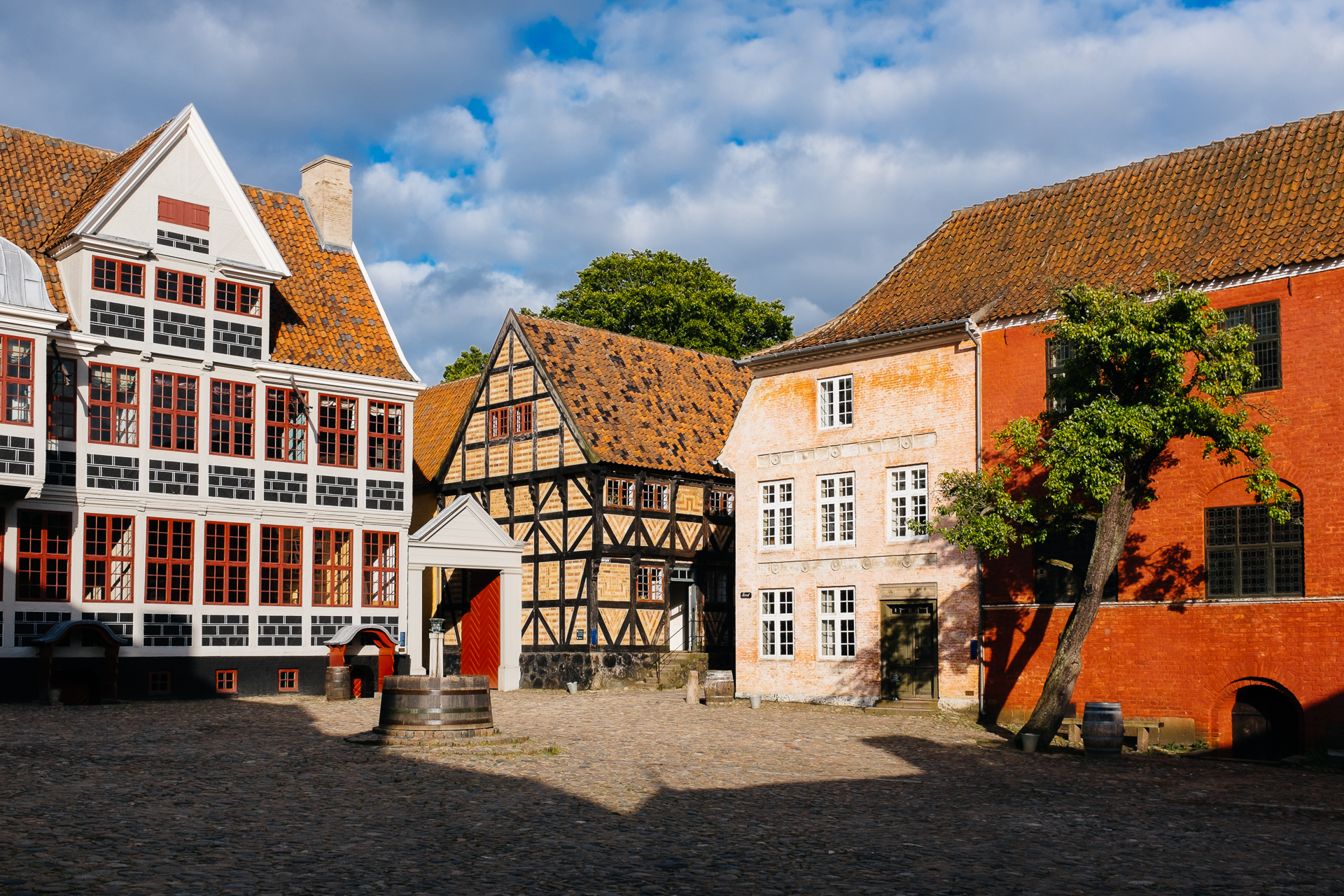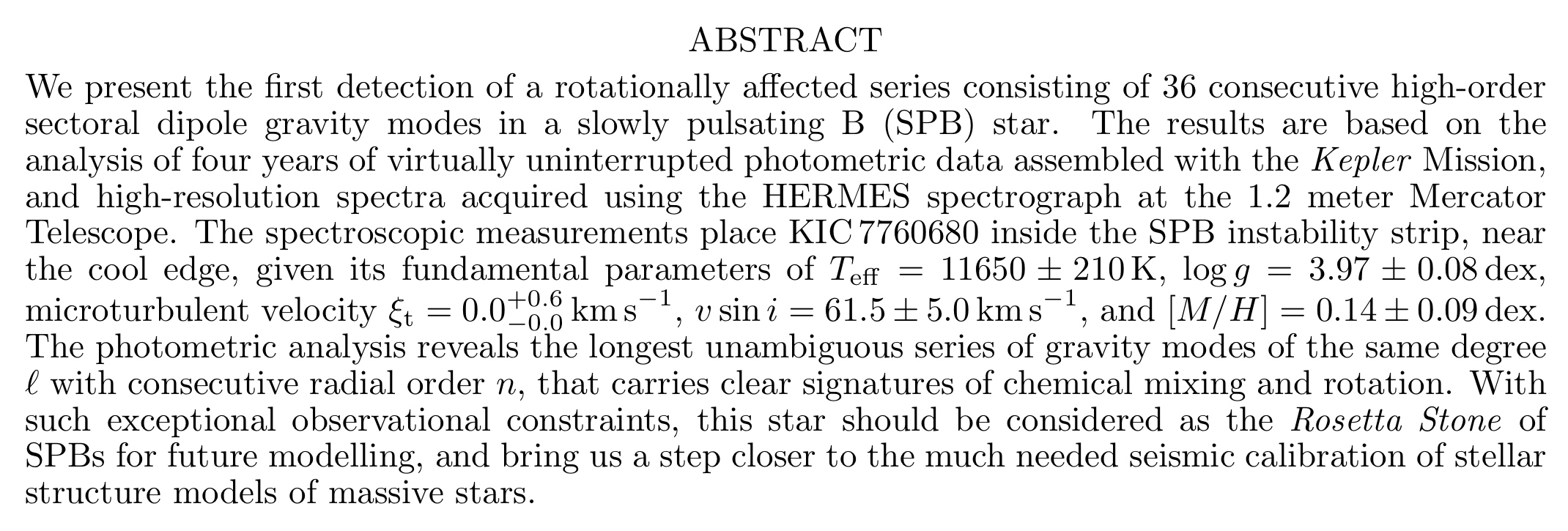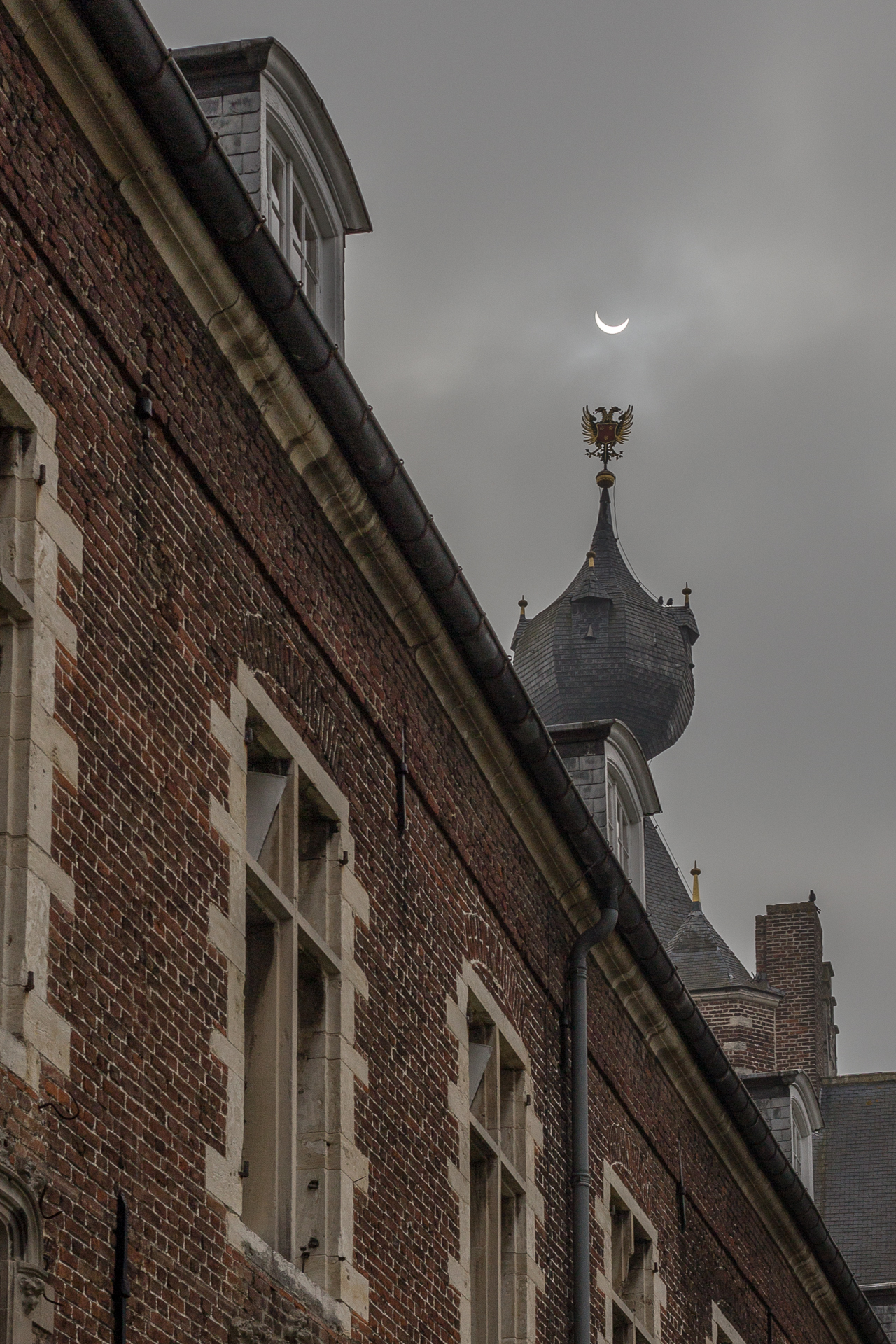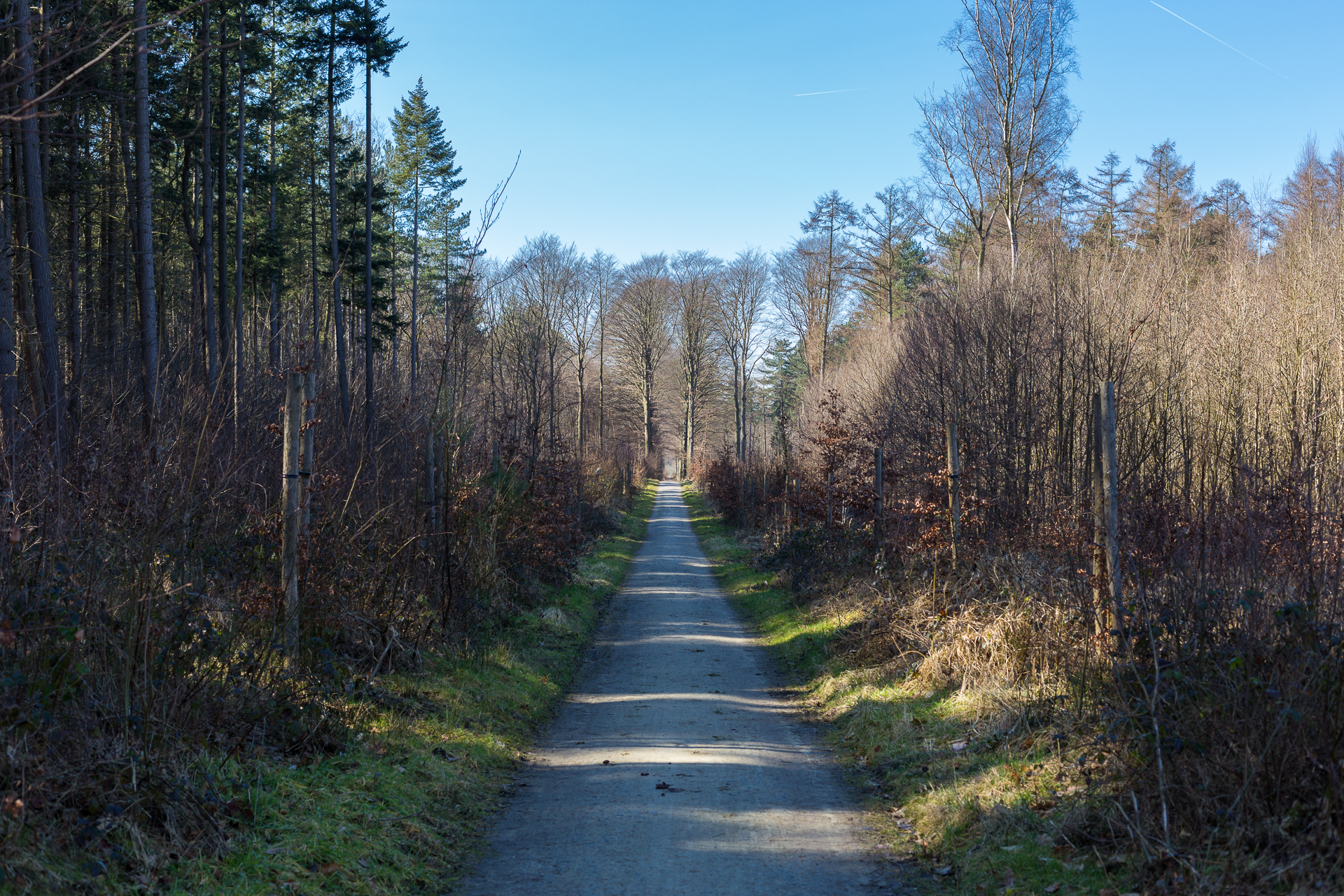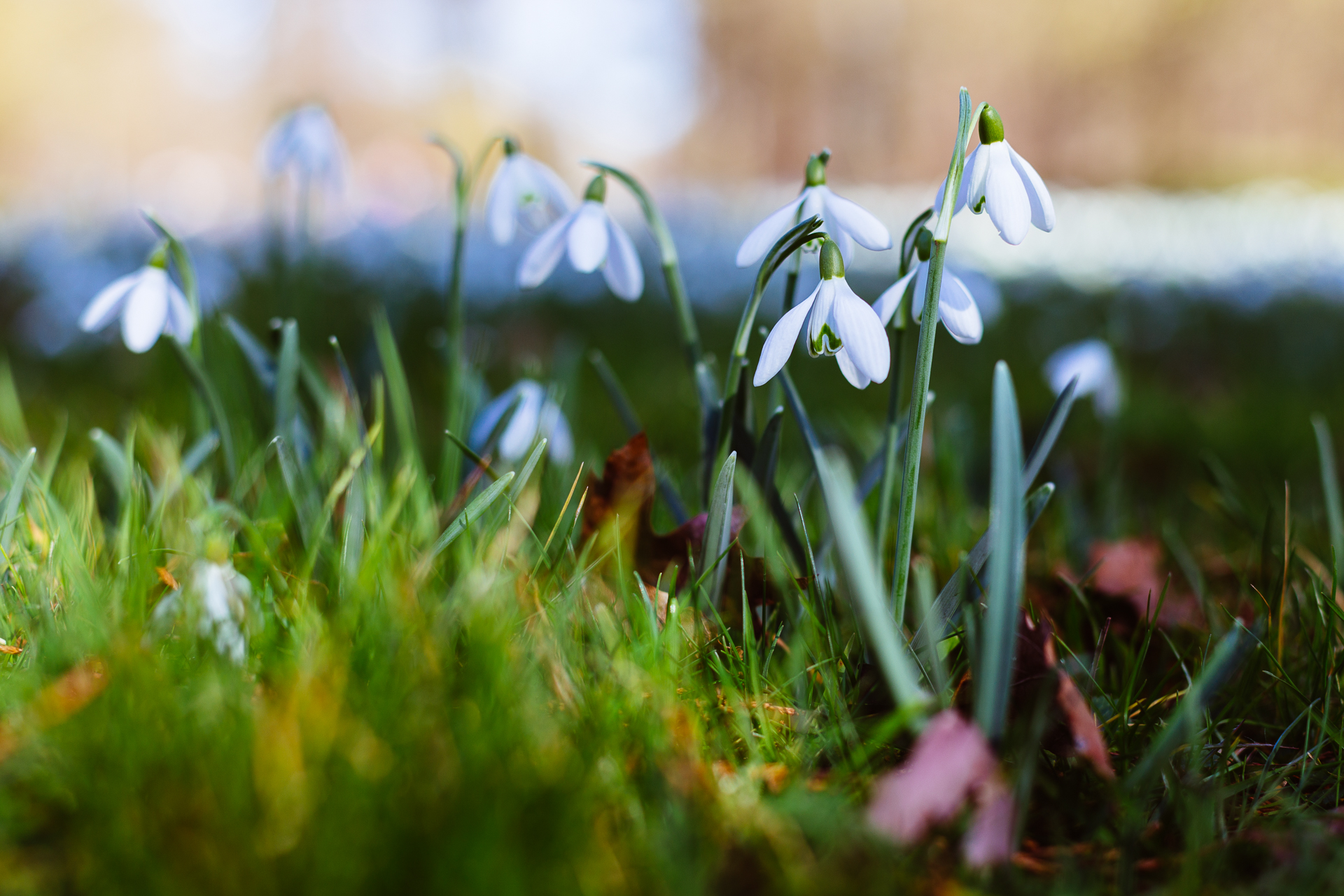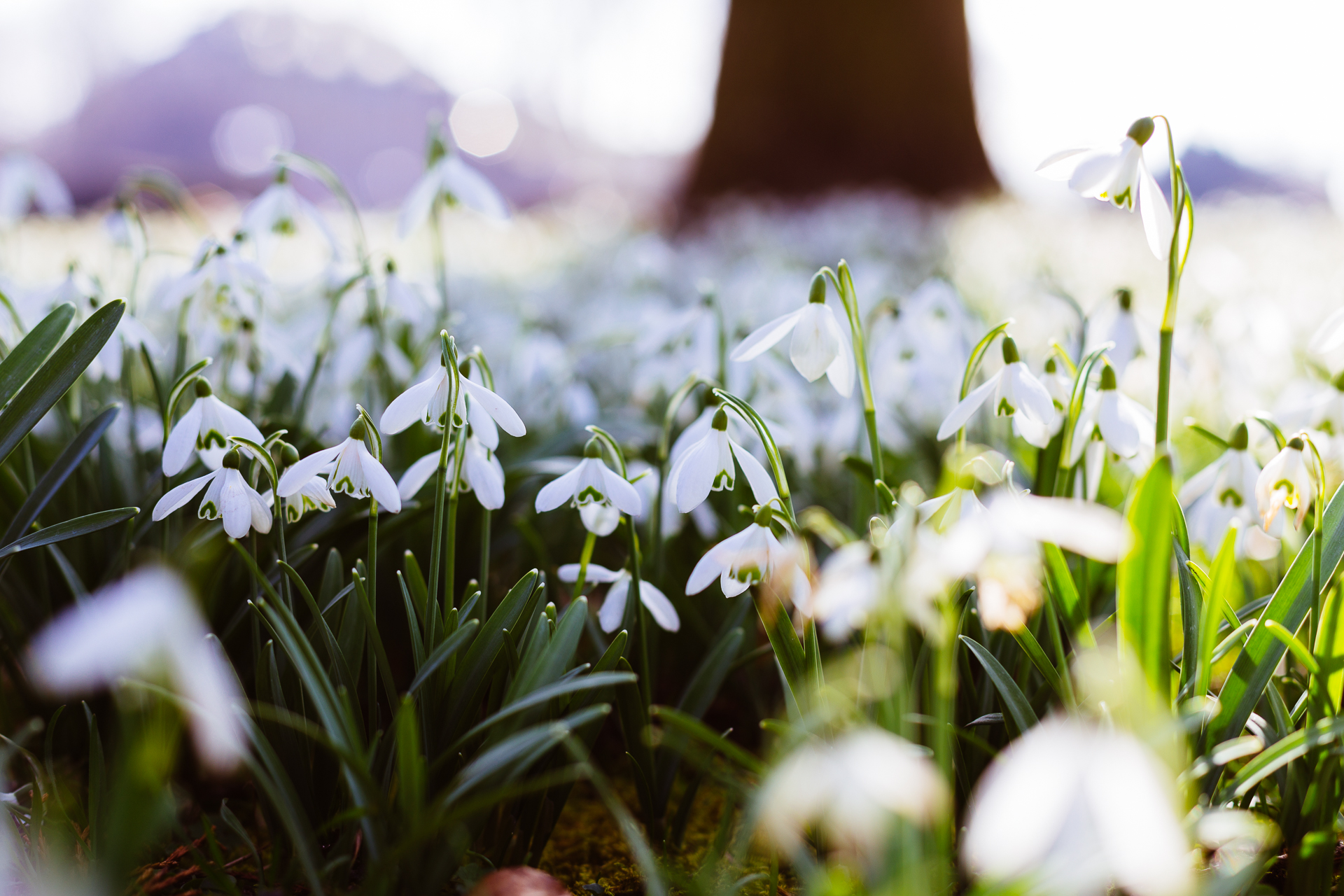Being an astronomer means that I get to travel far away from home for work at least on a few occasions every year. It might be an observing run (working during the night in the control room of a huge telescope, most likely on a deserted mountain far from civilisation, under the bright Milky Way), a conference (where I present my work and mingle), or a collaboration. This time I spent a full month in the USA participating in the Galactic Archaeology and Precision Stellar Astrophysics program at the Kavli Institute for Theoretical Physics (University of California, Santa Barbara). Since I planned this month to be half work, half cycling, I did not take a camera with me, so I don’t have any quality pictures to show, only a collage of photos taken with my phone. My sincere apologies for that…
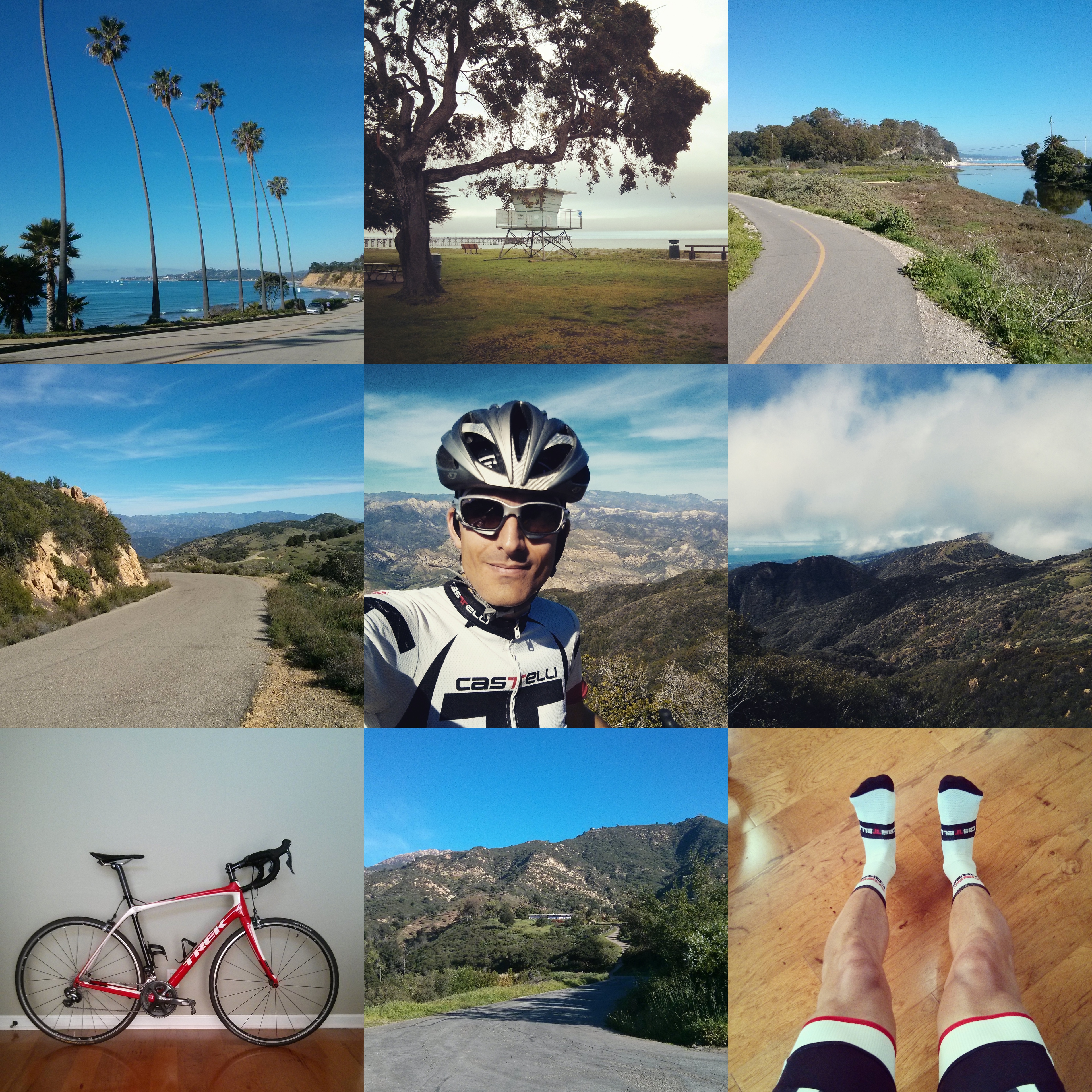
I arrived in Santa Barbara (or more precisely, Goleta, right in between the city and the campus) after 1+11 hours of flying (with Air New Zealand across the Atlantic Ocean, spent mostly catching up with editing my pictures from our holidays, and watching a few movies), an overnight stay in an airport hotel in Los Angeles, and a 2.5 hour bus ride. It was the afternoon of the Super Bowl (so later I could go shopping to an empty supermarket), a beautiful sunny day with 21°C. Also, I turned 30 on that day. I rented a quite spacious house with two other scientists, where I had my private room and bathroom. Two hours after my arrival I already had a rental beach cruiser bicycle (delivered to my door), I had filled up my cereal supplies for the mornings, and I had everything unpacked. For the rest of the afternoon my only goal was to stay awake until as late as possible, which was not so easy since I had moved 9 time zones to the West earlier. Any case, I had to adjust fast, as the next day was already a working day…
During the first week of my stay I attended the conference The Milky Way and its Stars: Stellar Astrophysics, Galactic Archaeology, and Stellar Populations. My daily commute was a 20 minute bike ride in the sunshine (or morning fog), passing by a nature reserve with lots of birds right before the last kilometre, which led under huge palm trees along the coast. The conference was a mix of stellar and galactic talks, much broader than the ones I had attended before, which helped to see the importance of seismic studies from yet another angle. I also gave a talk with the title Calibrating the stellar structure and evolution models of massive stars with asteroseismology.
I spent the next three weeks with training on a rental racing bike in the mornings and the weekends, and working at the KITP during the day. I have to say that at least partly thanks to the nice weather and the amount of cycling I managed to do, I was also very motivated at work, so even though I had not so much time left after all the different meeting and working group discussions, I got lots of things done. I did my first refereeing, I wrote and submitted a paper (which is almost accepted by now) and a proposal, etc. So I was very productive :)
And now about that cycling. Besides the cruiser that I used for commuting, I also rented a racing bike for three weeks starting from the Saturday after the conference. It was a Trek Domane 5.9 equipped with Shimano Ultega Di2. My initial goal for these three weeks was to bike 1000 km, but it became clear to me quite quickly that I could easily go beyond this, thus I adjusted my goal and aimed to complete all Strava challenges for February (1250 km cycling, at least 150 km in one ride, and 28000 feet of climbing).
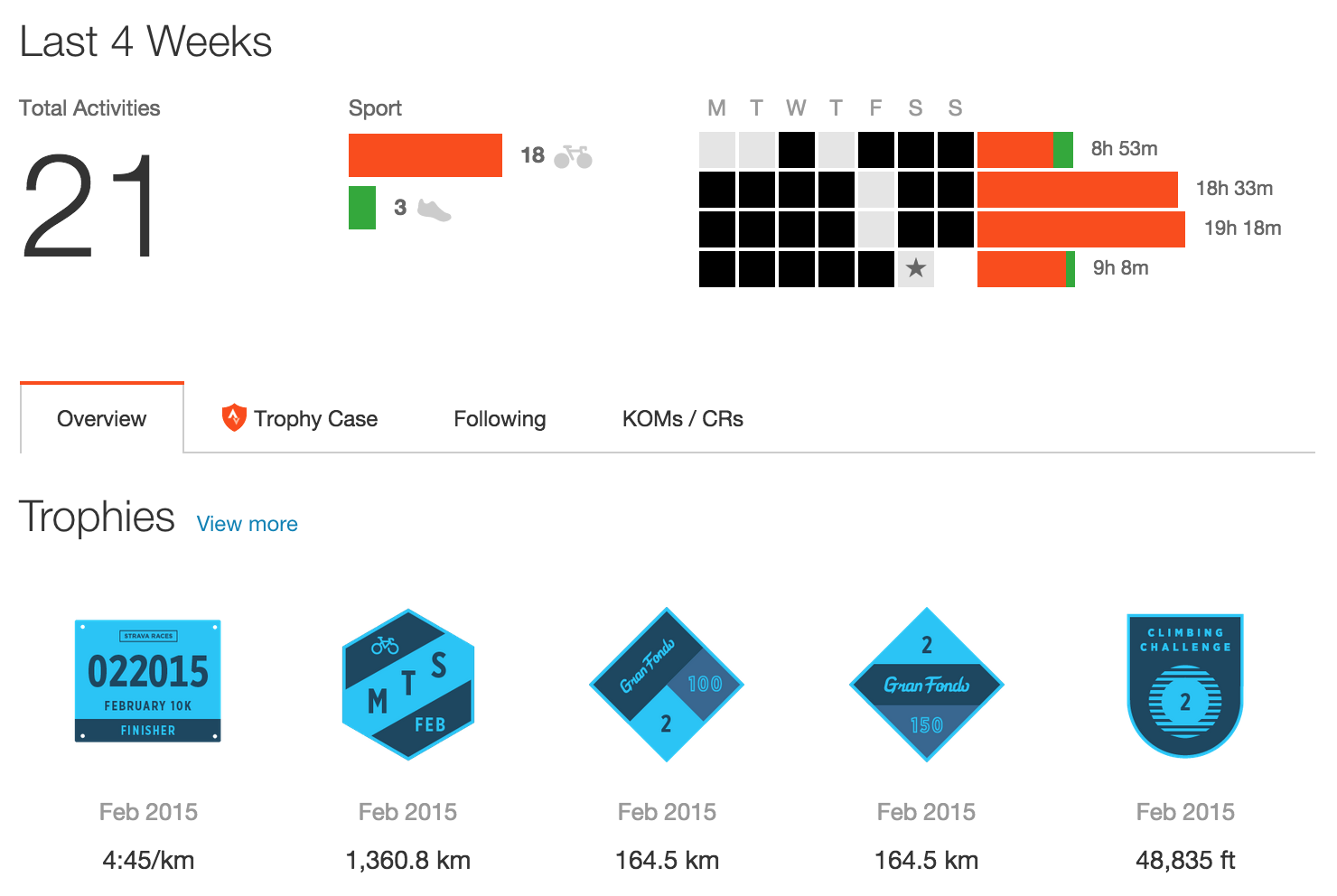
I rode every day except for Mondays (as a rest day was definitely necessary), typically for two hours in the mornings (getting up every day at 6, biking 7-9), then I did longer rides over the weekends. I have ridden through the morning fog and in the heat of the afternoon sun, in 4°C and 29°C, from sea level to 1200 metres, along the coast and around the small valleys. The list of rides also includes a real epic Century (a ride of 100 miles). Both the roads and the view were really great, and the car drivers payed attention to the cyclists (I was only pissed off once by someone passing by me way too close).
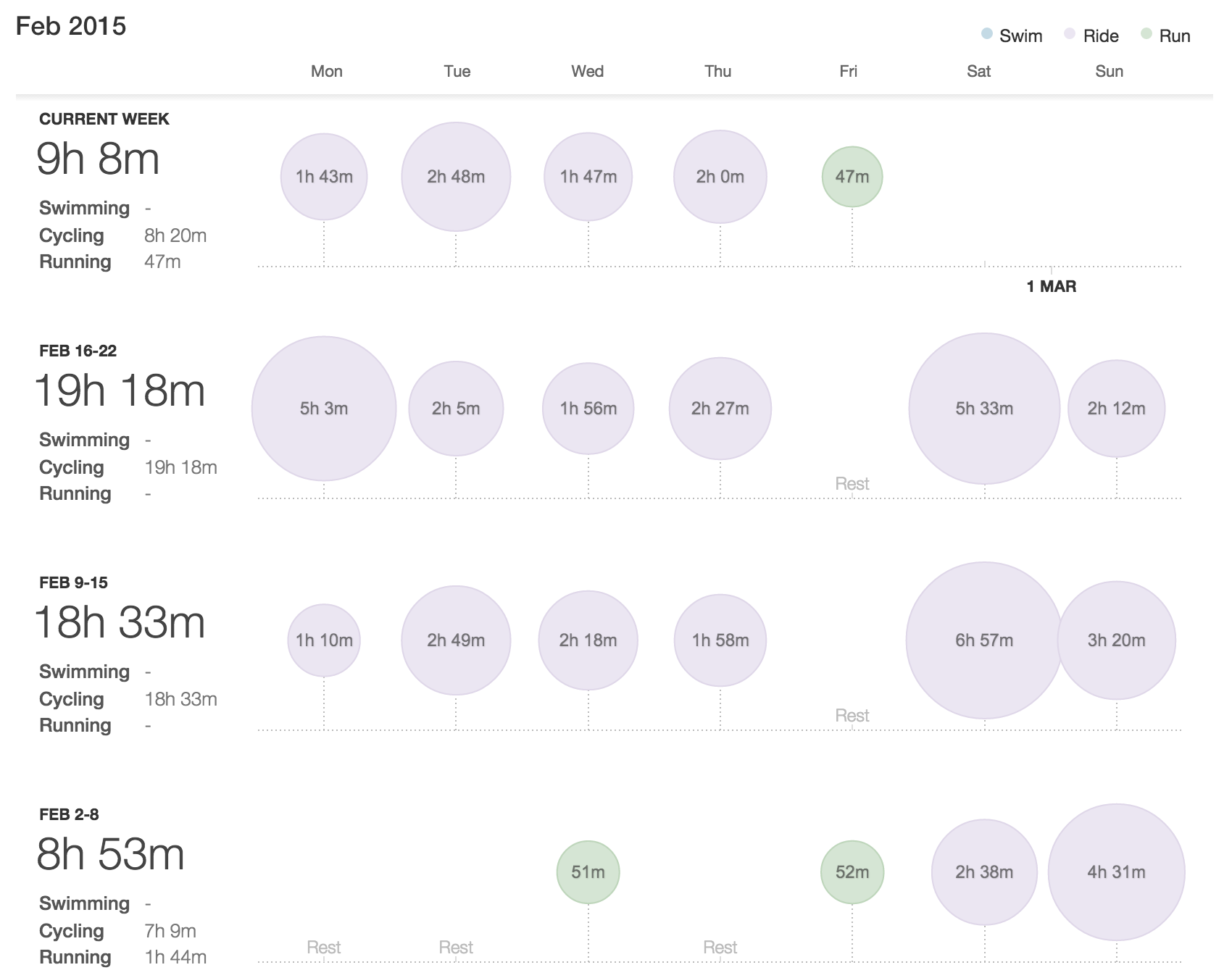
Not counting the two training weeks on Mallorca, the week of the 16th of February with its 512.9 km was my best week on the bike. In total, February with 1361 km was my 4th best month, but since I had quite some elevation gain (14885 m), and all my rides were solo rides, I was a bit slower than usual, which means that looking at the duration, this month was my 2nd best with 53h 21m, and if you add the time I spent running to this (three 10k runs, on the last day of my stay almost breaking my 5k and 10k PR), then it turns out that February was my most sporty month ever with 55h 53m. That’s not bad (ok, that’s simply awesome), especially given that all this cycling was done in 3 weeks instead of a full month.
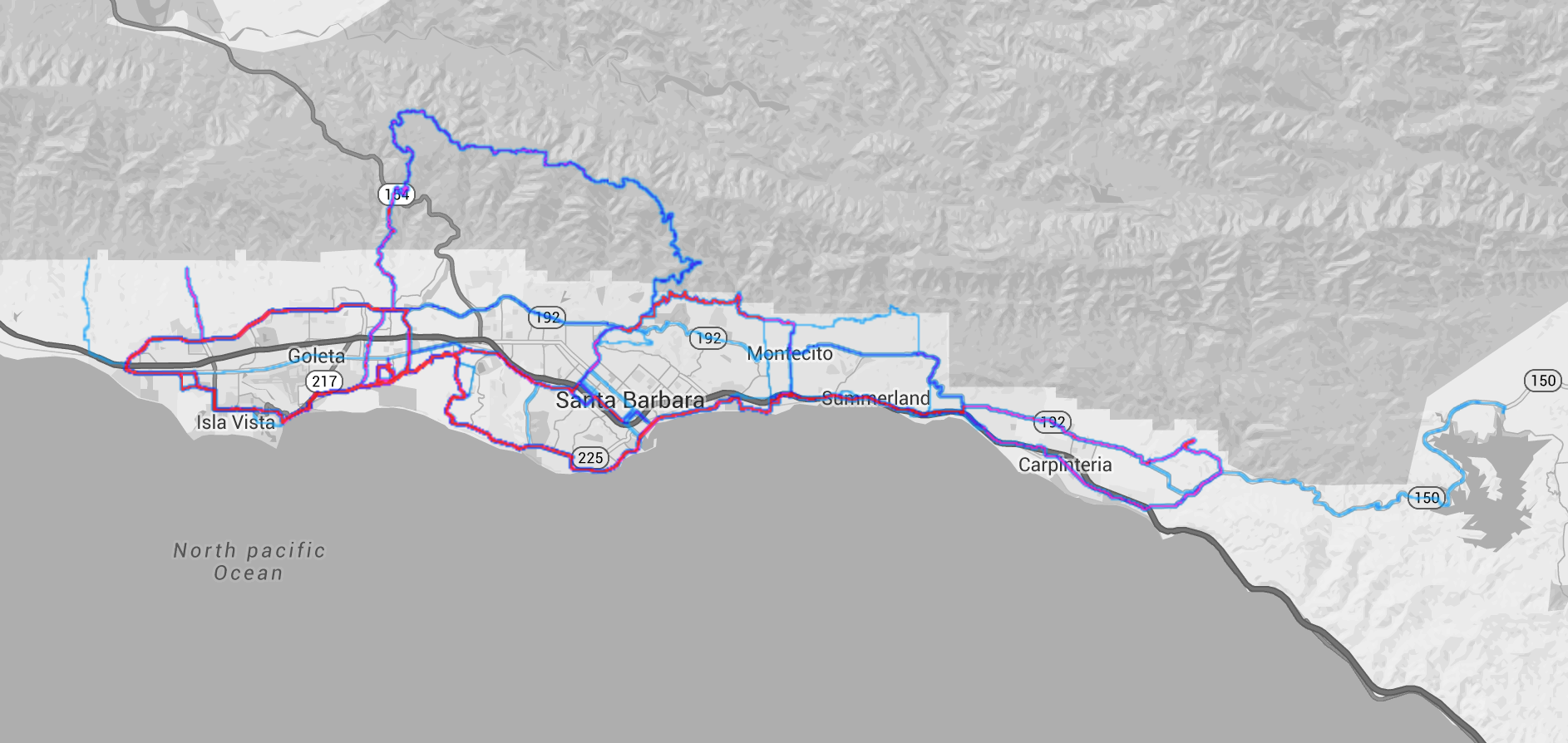
I was very tired at the end, but also very happy that my stay in California worked out so well, both for science and my fitness level. I also lost ~2 kg thanks to the amount of exercise (even with all the pizza and pasta I ate), so I am now at a very good 70.5 kg. I would be surprised if I managed to have a more hardcore month of training after this in 2015, but you never know ;)
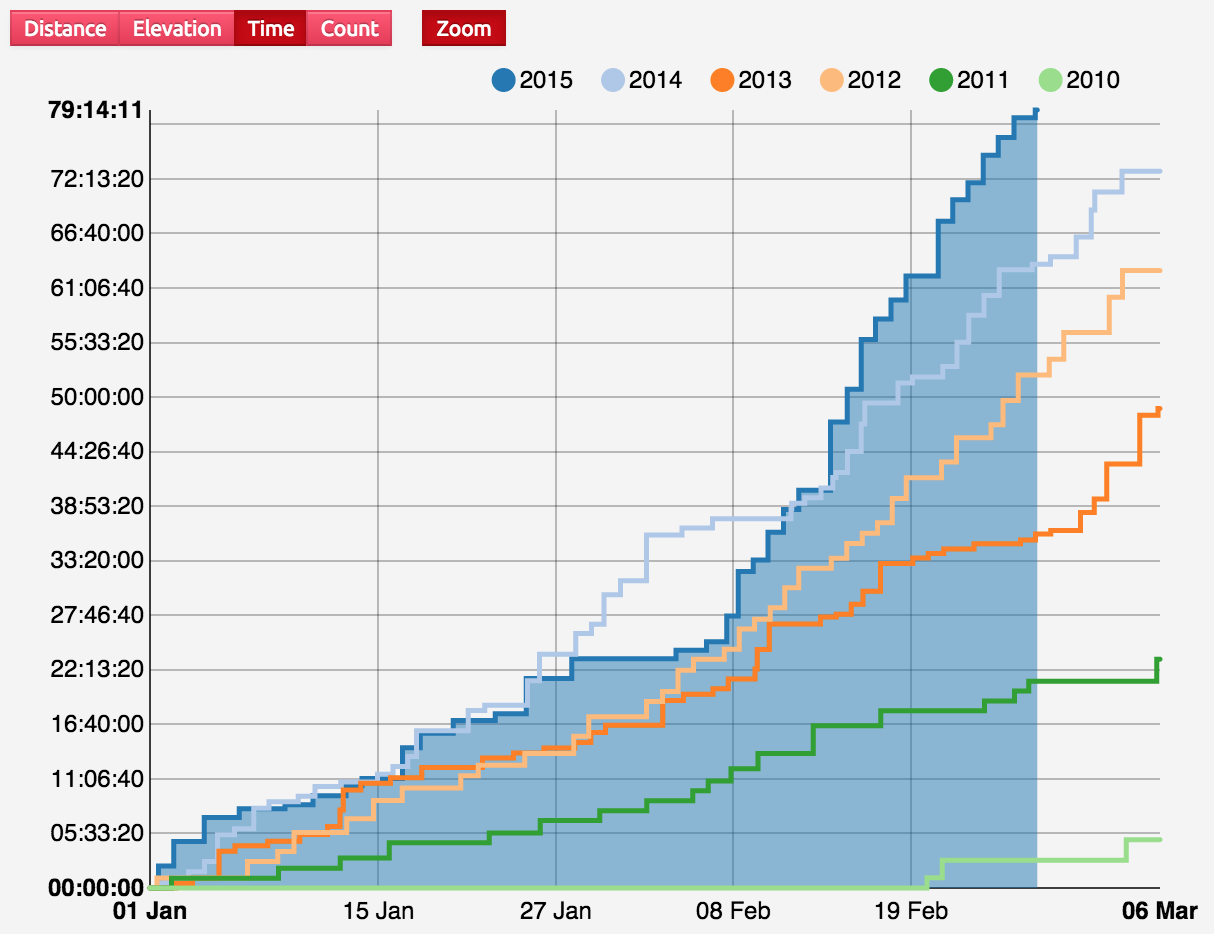
My new power meter tells me that I still ‘suck’ (although on the first rides that was partly due to the massive jet lag I had), so there is plenty of room for improvement… But again, it’s only the beginning of the cycling season. And for that, I am doing better than before. And the new bike is also perfect :)
